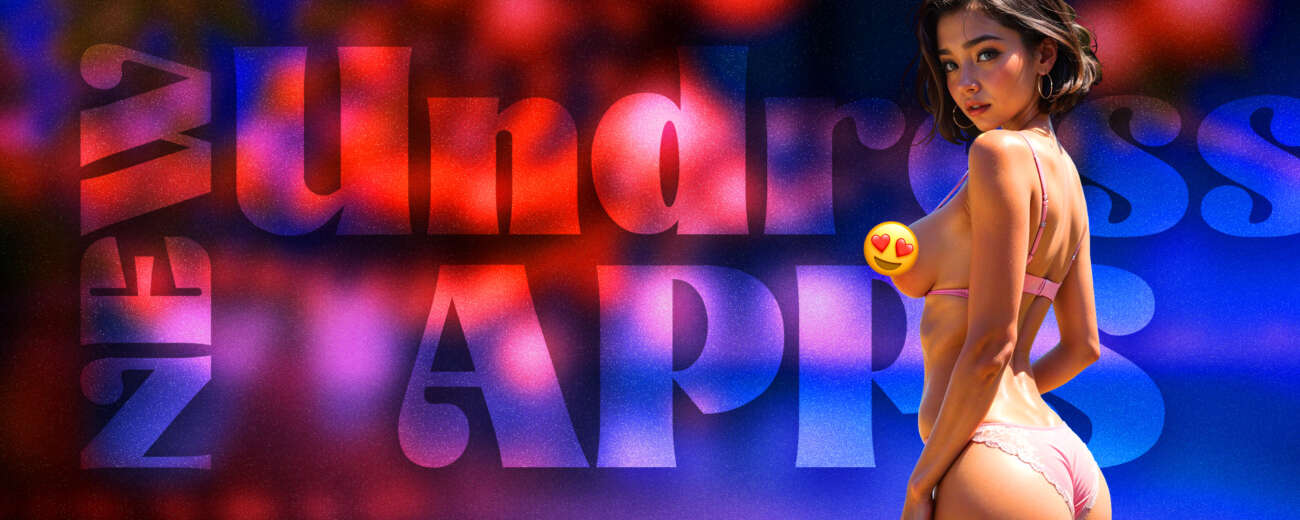Undress AI apps have undergone a remarkable transformation, now offering highly advanced capabilities at a fraction of the cost and complexity of earlier versions. These apps utilize cutting-edge artificial intelligence to remove clothing from images, delivering results that are both realistic and easy to achieve. Unlike the early tools that required specialized skills and delivered inconsistent results, today’s undress AI apps are designed for everyday users, offering intuitive interfaces and faster processing.
As these apps become more accessible and even offer free versions, their popularity is growing across various platforms, including mobile and desktop devices. While the technology brings new possibilities for digital creativity and image manipulation, it also raises serious ethical concerns regarding privacy and misuse. Understanding the evolution of these apps—along with their features, costs, and potential risks—provides crucial insights into the balance between innovation and responsibility in the digital age.
🆕 Here are examples of the 5 most recent Undress AI apps
|
App Name |
Pricing |
Free Trial |
Speed |
|
Premium: $9.99/mo |
✅ |
Fast |
|
|
Unclothy |
Premium: $19.99/mo |
✅ |
Cloud-based |
|
Nudifying |
Free plan, paid options available |
✅ |
⚡Real-time |
|
Premium: $2/mo |
✅ |
Fast |
|
|
NoDress |
Premium: $5.99/mo |
✅ |
Instant results |
🚀 How new undress AI apps have evolved
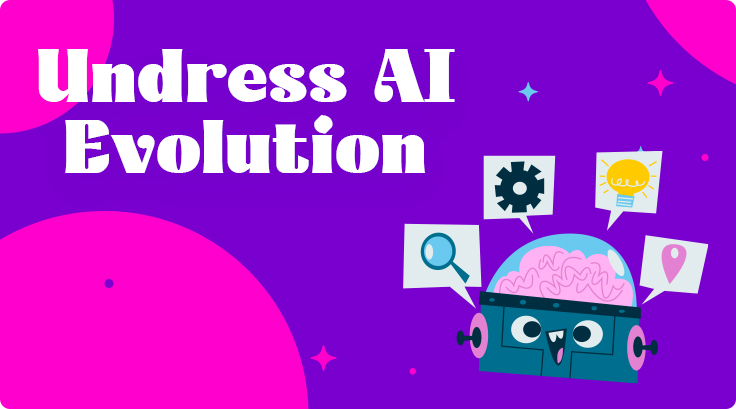 The evolution of undress AI apps is largely tied to the rapid development of artificial intelligence itself. Early AI models relied on limited datasets and basic algorithms, leading to less accurate image manipulation. However, the introduction of more powerful deep learning techniques and Generative Adversarial Networks (GANs) has completely transformed the capabilities of these apps. GANs, in particular, are able to generate highly realistic images by having two neural networks—one that creates the image and another that critiques it—work together to improve the output. This technology is now at the heart of new undress AI apps, allowing them to produce images that are nearly indistinguishable from reality.
The evolution of undress AI apps is largely tied to the rapid development of artificial intelligence itself. Early AI models relied on limited datasets and basic algorithms, leading to less accurate image manipulation. However, the introduction of more powerful deep learning techniques and Generative Adversarial Networks (GANs) has completely transformed the capabilities of these apps. GANs, in particular, are able to generate highly realistic images by having two neural networks—one that creates the image and another that critiques it—work together to improve the output. This technology is now at the heart of new undress AI apps, allowing them to produce images that are nearly indistinguishable from reality.
Additionally, machine learning models now have access to significantly larger and more diverse datasets. This means that modern AI tools are better trained to recognize and replicate a wide variety of body types, clothing textures, and lighting conditions. These improvements enable newer apps to deliver results with a higher degree of accuracy and realism than their predecessors, which often struggled to produce convincing images.
Enhanced Speed and Efficiency
One of the major drawbacks of older undress AI apps was their slow processing speed. Early versions of these tools required significant computational power and time to analyze an image, leading to delays and inconsistent results. The latest AI models, however, are much faster. By using optimized algorithms and more efficient processing methods, today’s undress AI apps can manipulate images in a matter of seconds, regardless of the complexity of the clothing or background. This improvement in speed makes the tools more user-friendly and practical for casual use, removing the frustration of long wait times.
The rise of cloud-based AI processing has made these tools more scalable and accessible. Users no longer need powerful hardware or advanced software to run the apps—everything happens on remote servers, allowing for quick image processing on mobile devices, tablets, or computers. This shift to cloud-based computing has been a game changer in making undress AI apps more widely available.
Here is a comparison between the original DeepNude app and one of the newest undress ai apps on the market:
| Feature | DeepNude (Old) | Undress.app (New) |
| Processing Speed | Moderate, results in 60 seconds | Fast, results in just a few seconds |
| Image Quality | Good, but with occasional inconsistencies | High-quality, realistic outputs with fewer flaws |
| Customization | Limited customization options | Extensive options for body type and image parameters |
| Ease of Use | Simple, no installation required | Extremely user-friendly, intuitive interface |
| Cost | Freemium with paid tiers for full features | Freemium, powerful free features with paid upgrades |
| Privacy | Basic, no registration needed | Strong privacy features with encryption and user control |
| Global Accessibility | Available in 195 countries | Global access, highly accessible platform |
| Technology Used | Stable diffusion models | Advanced deepnude AI technology for faster, more precise results |
We will cover more about the evolution of the new apps later on this page.
Simplified User Interface and Accessibility
Older versions of undress AI apps often required users to navigate complex settings and adjust parameters manually to achieve their desired results. This complexity made the apps difficult to use, especially for individuals without technical expertise. Today, new undress AI apps come with streamlined, intuitive interfaces that require minimal input from users. Most apps now feature a simple “upload-and-process” design, where users can upload a photo and let the AI do the rest. This makes the tools accessible to a much wider audience, from casual users to those with no prior experience in image editing or AI technologies.
As a result, the accessibility of undress AI apps has dramatically increased. What was once a niche technology requiring technical know-how is now available to anyone with an internet connection. This ease of use has expanded the reach of these apps, making them popular across different demographics and regions.
Impact of Advanced AI on Image Quality
The impact of advanced AI models on image quality cannot be overstated. Older apps often produced images with noticeable flaws—such as jagged edges, unnatural skin tones, or poorly blended backgrounds—because the AI wasn’t sophisticated enough to handle complex image details. Newer undress AI apps, however, benefit from highly trained neural networks that can better handle these challenges. For instance, Convolutional Neural Networks (CNNs) are now more adept at recognizing the boundaries between clothing and skin, allowing for smoother transitions and more accurate body contours.
In particular, the texture synthesis techniques used by new AI models have vastly improved, enabling apps to generate realistic skin tones, shadows, and lighting effects. This results in images that appear much more natural and lifelike, making the manipulated photos difficult to distinguish from real ones. The combination of AI-driven image reconstruction and enhanced texture modeling is what sets new undress AI apps apart from their predecessors in terms of visual fidelity.
💰 Cost and Accessibility of new undressing apps
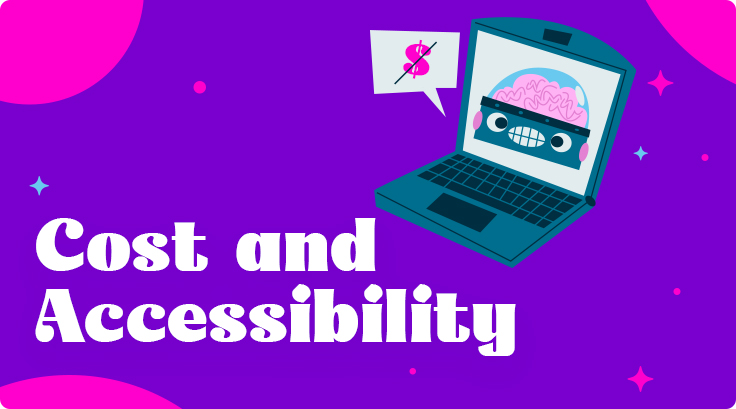 The evolution of undress AI apps has not only improved their technological capabilities but has also made these tools significantly more affordable and accessible to a wider audience. Earlier versions of these apps were often expensive and limited in scope, but today, anyone with basic internet access can easily find and use these apps with minimal cost or effort.
The evolution of undress AI apps has not only improved their technological capabilities but has also made these tools significantly more affordable and accessible to a wider audience. Earlier versions of these apps were often expensive and limited in scope, but today, anyone with basic internet access can easily find and use these apps with minimal cost or effort.
Lower Costs
One of the key factors driving the popularity of new undress AI apps is their affordable pricing models. In the early days of AI-powered image manipulation tools, users often had to pay for premium versions or advanced features. Today, many undress AI apps operate under a freemium model, where the core functions are free to use, with optional upgrades available for those seeking higher-quality results or additional features.
This shift to freemium and low-cost models has made undress AI apps more accessible to casual users who may not want to invest heavily in software. The low barrier to entry allows for more widespread use, even among individuals who might not have previously considered using these tools due to cost concerns. Competition among developers has driven prices down, making even the premium versions more affordable than ever before.
Increased Accessibility
The accessibility of undress AI apps has also expanded significantly with the rise of cloud-based processing and mobile compatibility. Unlike earlier versions that required users to download and install software on a desktop, many modern undress AI apps are entirely web-based. This means users can access them from any device, including smartphones, tablets, and desktops, without the need for downloads or installations.
Cloud computing has played a significant role in making these apps more accessible. By processing the heavy computational work on remote servers, cloud-based undress AI apps allow users to manipulate images even on low-end devices. This has democratized access to powerful AI tools, removing the need for high-end hardware and making it possible for a larger demographic to experiment with these technologies.
These apps have become more user-friendly, with streamlined interfaces that don’t require any technical expertise. This has further expanded their reach, making them accessible not just to tech-savvy individuals but also to casual users who are unfamiliar with advanced AI or image editing software.
🕰️ Older vs. New Undress AI Apps
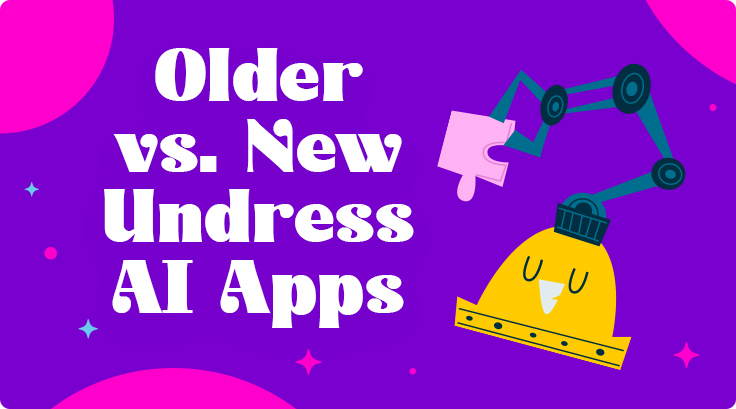 As undress AI apps have evolved, the newer versions have introduced several key improvements over older ones. These advancements touch upon multiple aspects of the user experience, such as image quality, speed, and usability. Let’s break down some of the most important features that have improved over time:
As undress AI apps have evolved, the newer versions have introduced several key improvements over older ones. These advancements touch upon multiple aspects of the user experience, such as image quality, speed, and usability. Let’s break down some of the most important features that have improved over time:
Image Quality
Older undress AI apps often produced images with noticeable flaws. The results were typically far from realistic, with uneven skin tones, visible errors in body contours, and poorly blended clothing removals. These limitations stemmed from less advanced AI models that struggled to accurately predict what the body beneath clothing should look like.
Newer apps have greatly enhanced the realism and accuracy of their outputs. By leveraging more advanced deep learning models and Generative Adversarial Networks (GANs), these apps can now create highly realistic images that are difficult to distinguish from actual photos. Improvements in texture synthesis and inpainting technology allow the AI to generate smoother transitions, more accurate skin tones, and better handling of shadows and lighting. These upgrades result in images that appear far more natural compared to the early attempts of older apps.
Here is a simple example of what has changed in terms of image quality over the last 5 years:
| Feature | DeepNude (Old) | Undress.app (New) / DeepSukebe (New) |
| Realism | Basic, often flawed | High-quality, realistic outputs with minimal flaws |
| Texture Accuracy | Limited, with noticeable inconsistencies | Advanced texture synthesis for smoother, accurate skin tones |
| Lighting and Shadows | Poor handling of lighting | Advanced handling of lighting, shadows, and contours |
| Output Resolution | Standard quality | High-resolution images with AI enhancements |
Processing Speed
Speed has also seen a major improvement. Older apps often took several minutes to process a single image, especially when dealing with high-resolution photos or complex clothing patterns. This slow processing was largely due to the limitations in AI architecture and the need for significant computational power, which many users lacked.
Newer undress AI apps have optimized their processing algorithms, allowing them to handle image manipulation in a matter of seconds. Cloud-based AI processing has further accelerated this, as the computational load is offloaded to remote servers, meaning even users with low-end devices can enjoy faster results. This improvement makes the newer apps much more efficient and appealing to a broader audience.
| Feature | DeepNude (Old) | Undress.app (New) |
| Speed | Slow, several minutes | Fast, under 15 seconds for most images |
| Cloud Processing | No | Yes, leading to faster processing with low-end devices |
| Efficiency | Inconsistent, requiring retries | Smooth, reliable, and fast processing |
User Interface and Usability
The user interface of older apps was often complicated and required some technical know-how to navigate. Users were forced to manually adjust parameters to get the desired results, making these tools difficult for casual users to operate.
Newer undress AI apps, on the other hand, feature intuitive, streamlined interfaces that require little to no technical expertise. These apps typically offer simple drag-and-drop or upload features, allowing users to generate images with just a few clicks. This improvement in user-friendliness has opened the door for more people to use these apps, even those who have no experience with image editing or AI tools.
Customization Options
Older apps offered limited customization when it came to image manipulation. The results were often generalized, without options to fine-tune details like body type, skin tone, or age. Users had very little control over how the final image would turn out, making the output less personalized and often unsatisfactory.
Newer undress AI apps have added a range of customization features. Users can now specify details like body type, skin tone, age, and other physical characteristics, which allows for more accurate and tailored results. These options enhance the overall quality and realism of the images and give users more control over the final output.
To sum things up:
- Body Type and Age Customization
Modern undress AI apps allow users to specify details like body type, age, and other physical characteristics to make the output more realistic and personalized. This was not available in older versions, which provided a one-size-fits-all result.
- Advanced Clothing Manipulation
Newer apps not only undress images but also offer options to modify clothing, such as changing styles or colors. This flexibility adds more creative control for users - Enhanced Skin Tone Matching
Modern AI models can better analyze visible parts of the image and predict accurate skin tones for body parts under the clothing, offering more seamless and realistic results than older apps could provide.
Below you will find 5 of the newest undress AI apps for 2024
Ptool AI – Undress AI
 Ptool AI’s Undress AI is an AI-powered tool that allows users to remove clothing from images simply and effectively. It is known for its precision and user-friendly interface, making it easy for both beginners and advanced users to manipulate images. The platform provides a free trial, which is ideal for those who want to test the tool before subscribing to premium features. The app’s ability to produce high-quality results within minutes makes it a top choice for users seeking both speed and realism.
Ptool AI’s Undress AI is an AI-powered tool that allows users to remove clothing from images simply and effectively. It is known for its precision and user-friendly interface, making it easy for both beginners and advanced users to manipulate images. The platform provides a free trial, which is ideal for those who want to test the tool before subscribing to premium features. The app’s ability to produce high-quality results within minutes makes it a top choice for users seeking both speed and realism.
With premium plans starting at $19.99 per month, Ptool AI offers additional features such as faster processing times and higher resolution outputs. The platform also emphasizes user privacy, ensuring that no images are stored on their servers after processing. This balance of privacy, efficiency, and quality makes Ptool AI a reliable option for undressing AI technology.
Key Features:
- High-quality image manipulation with fast processing times
- Free trial available with premium options for advanced features
- User-friendly interface suitable for all skill levels
- Pricing: Premium plans start at $19.99/month
UndressApp.ai
 UndressApp.ai is a cloud-based AI tool designed to digitally remove clothing from images. The platform offers a free trial, allowing users to test its capabilities before upgrading to a premium subscription. Known for its fast and accurate processing, UndressApp provides a seamless experience for users who need quick, high-quality results. The app’s simplicity makes it accessible to those with little to no technical expertise, offering a straightforward interface for ease of use.
UndressApp.ai is a cloud-based AI tool designed to digitally remove clothing from images. The platform offers a free trial, allowing users to test its capabilities before upgrading to a premium subscription. Known for its fast and accurate processing, UndressApp provides a seamless experience for users who need quick, high-quality results. The app’s simplicity makes it accessible to those with little to no technical expertise, offering a straightforward interface for ease of use.
One of the main advantages of UndressApp is its customization options, allowing users to tweak body types, skin tones, and other features to achieve more realistic and personalized results. Premium plans start at $37.99 per month, offering faster processing speeds and additional features for advanced users. The platform also prioritizes user privacy by ensuring that images are not stored after processing.
Key Features:
- Cloud-based processing for fast results
- Customization features for more personalized outputs
- Free trial available with paid plans for advanced functionality
- Pricing: Premium starts at $37.99/month
DeepNude.us
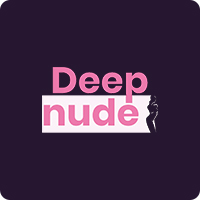 DeepNude.us is a popular AI tool that allows users to remove clothing from images using advanced deep learning technology. The platform is known for delivering high-quality, realistic outputs, making it one of the most sought-after undressing AI apps. Users can access a free trial before committing to a premium plan, which provides more advanced features and faster processing times. DeepNude.us has built a reputation for offering simple and efficient tools that cater to both beginners and more experienced users.
DeepNude.us is a popular AI tool that allows users to remove clothing from images using advanced deep learning technology. The platform is known for delivering high-quality, realistic outputs, making it one of the most sought-after undressing AI apps. Users can access a free trial before committing to a premium plan, which provides more advanced features and faster processing times. DeepNude.us has built a reputation for offering simple and efficient tools that cater to both beginners and more experienced users.
With premium plans starting at $29.95 per month, DeepNude.us offers a variety of customization options to refine the undressing process. These include adjustments for skin tone, body type, and image quality, giving users control over the final result. The app also prioritizes privacy, ensuring that no images are stored on their servers after processing.
Key Features:
- High-quality results with customizable features
- Simple interface for quick and easy use
- Free trial available with paid plans for faster processing
- Pricing: Premium starts at $29.95/month
Nudiva.io
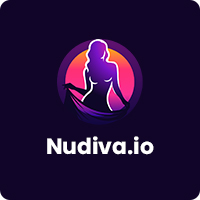 Nudiva.io is a premium AI tool designed to remove clothing from images with impressive speed and accuracy. The platform offers both free and paid plans, allowing users to explore the app’s basic features before upgrading to premium options for advanced functionality. Nudiva.io stands out for its fast, real-time image processing and its focus on delivering realistic results. The app is easy to navigate, making it a great choice for users of all skill levels.
Nudiva.io is a premium AI tool designed to remove clothing from images with impressive speed and accuracy. The platform offers both free and paid plans, allowing users to explore the app’s basic features before upgrading to premium options for advanced functionality. Nudiva.io stands out for its fast, real-time image processing and its focus on delivering realistic results. The app is easy to navigate, making it a great choice for users of all skill levels.
One of Nudiva.io’s standout features is its ability to customize the output, allowing users to modify skin tone, body type, and other elements to achieve more personalized results. The app emphasizes privacy and security, ensuring that no images are stored after processing. Premium plans start at $9.99 per month, offering faster speeds and enhanced features for users who need more control over their outputs.
Key Features:
- Real-time image processing with high accuracy
- Customization options for detailed adjustments
- Free plan available with paid options for premium features
- Pricing: Premium starts at $9.99/month
⚠️ Risks and Potential Harm of Newer Undress Apps
As undress AI apps become more advanced, accessible, and widely used, the risks and potential for harm grow alongside their capabilities. While the technology behind these apps has greatly improved in terms of speed, quality, and ease of use, the very nature of their functionality raises serious concerns about misuse, privacy violations, and the broader societal impact. Here are some of the key risks associated with the widespread use of these newer apps:
Non-Consensual Image Manipulation
One of the most significant risks with undress AI apps is their potential to create non-consensual explicit content. Unlike earlier versions, which were limited in scope and required more technical knowledge, the new apps are highly accessible and easy to use. This makes it easier for bad actors to upload images of others—often without their knowledge or consent—and generate manipulated, explicit content. These images can then be shared or distributed online, leading to severe emotional and reputational harm to the victims.
Victims of non-consensual image manipulation are often women, and the widespread availability of these tools has led to an increase in harassment and exploitation. The rise of these apps has exacerbated the problem of revenge porn and other forms of digital exploitation, where individuals are targeted for the purposes of humiliation, blackmail, or harassment.
Privacy Violations
Newer undress AI apps have made privacy violations more prevalent by offering anonymous, web-based services. Unlike older apps that may have required personal information or downloads, newer tools allow users to manipulate images without registration, making it difficult to track or hold users accountable. This has led to increased concerns about the ability to safeguard personal photos and images from being misused by others.
With modern AI tools capable of accessing images from various online sources, there is a risk of photo scraping, where images are automatically extracted from social media or websites to be used without the owner’s consent. This raises critical questions about data ownership and digital rights in an era of highly advanced AI.
Psychological and Emotional Impact on Victims
The emotional and psychological toll on individuals whose images are manipulated by undress AI apps can be devastating. Victims may experience severe emotional distress, anxiety, and depression as a result of their private or public images being exploited. In many cases, the reputational harm caused by the unauthorized distribution of explicit content can have long-lasting effects on personal and professional lives.
Difficulty in Regulation and Enforcement
One of the greatest challenges posed by these newer apps is the difficulty in regulating and enforcing laws around their misuse. Because many of these apps are hosted on international platforms or anonymous websites, it becomes nearly impossible to trace or prosecute those responsible for creating and sharing non-consensual content.
The laws governing AI-driven content creation and deepfake technology are still evolving. While some regions, like the EU and certain US states, have enacted laws to criminalize non-consensual image manipulation, the global nature of the internet makes it difficult to effectively enforce these regulations.
Wider Societal Impact
The growing accessibility of undress AI apps risks normalizing the manipulation of digital images, potentially eroding trust in visual media. As these tools become more widespread, society may become desensitized to the idea of image manipulation, further complicating efforts to protect individuals from exploitation. In addition, the rapid advancement of AI technologies continues to outpace ethical discussions, leaving many unanswered questions about the moral implications of these tools.
🔐 5 Tips How to Protect Yourself from New AI Undress Apps
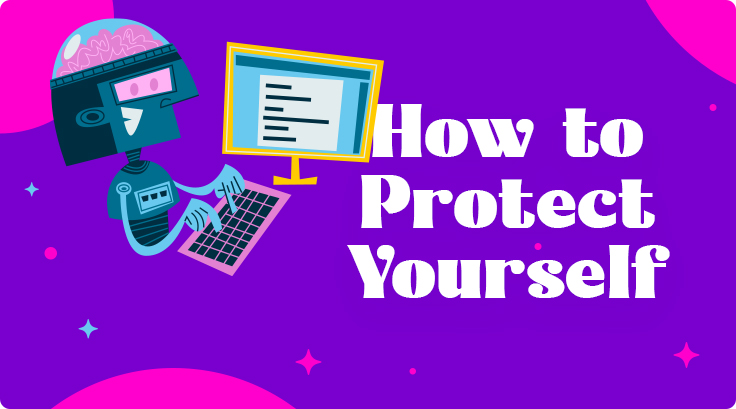 As undress AI apps become more widespread, it’s essential to take proactive steps to protect your privacy and digital safety. These tools can be used maliciously to create non-consensual content, so here are several ways to safeguard yourself.
As undress AI apps become more widespread, it’s essential to take proactive steps to protect your privacy and digital safety. These tools can be used maliciously to create non-consensual content, so here are several ways to safeguard yourself.
1 Control Your Digital Footprint
One of the most important steps to protect yourself from undress AI apps is controlling what you share online. Be mindful of the images and media you post publicly, especially on social media. Public profiles make it easier for malicious actors to download your content and misuse it. Adjust your privacy settings so that only trusted contacts can see your photos, and consider limiting the number of high-resolution images you upload. Reducing the visibility of your images is a key deterrent in keeping them from being manipulated.
In addition, consider removing EXIF metadata from your images. This data, embedded within photos, can contain information like location, date, and camera settings, which could aid someone in using your images for malicious purposes. Most phones and cameras allow you to strip metadata from images before uploading them.
2 Strengthen Your Privacy and Security Settings
Protecting your online accounts is another critical step. Using strong, unique passwords for each of your accounts, and enabling two-factor authentication (2FA) can prevent unauthorized access. This added layer of security makes it much harder for hackers to breach your accounts and gain access to private photos. Many social platforms offer 2FA, and it’s a simple way to secure your accounts against malicious attacks.
Additionally, monitor your online presence regularly. Tools like Google Alerts or reverse image searches can notify you if images or mentions of you appear online without your consent. Regularly checking your name or images can help you catch potential misuse early.
3 Make Use of AI Detection Tools
As AI-generated images become more convincing, several tools have been developed to detect manipulated images, including deepfakes. These detection tools analyze images for inconsistencies such as unnatural lighting, shadow mismatches, or digital artifacts that indicate tampering. While these tools are not foolproof, they can provide an additional layer of security when you suspect an image has been altered.
Another effective measure is to add watermarks to your images before sharing them online. Watermarks act as a deterrent, as they make it harder for someone to manipulate the image without the watermark being visible. In case the image is used without consent, watermarks can also help trace the origin.
4 Adjust Your Social Media Settings
Many social media platforms offer privacy settings that allow you to control who can view and download your images. On platforms like Facebook or Instagram, you can restrict your audience to only trusted friends or family, making it harder for strangers to access and misuse your photos.
You should also review the photo tagging settings on social media. By disabling or moderating photo tags, you can control whether other users can tag you in images without your approval. This ensures that you’re not linked to or associated with images that could be altered or distributed.
5 Report Misuse Immediately
If you find an image of yourself that has been altered using an undress AI app, report it immediately to the platform where it was shared. Most major social media and content-hosting platforms have policies against non-consensual explicit content. They often remove such material and may assist in tracking the original uploader.
In more serious cases, you may want to consult with a lawyer who specializes in digital rights and privacy laws. Many countries are introducing legislation to combat the spread of deepfakes and non-consensual content. By seeking legal advice, you can explore options for removing the content and taking legal action against those responsible.
Conclusion
The rise of new undress AI apps has brought both remarkable advancements in artificial intelligence and significant challenges in terms of privacy and ethical concerns. These apps have evolved to become more sophisticated, faster, and easier to access than ever before. With features such as improved image quality, faster processing speeds, and customizable options, they have outgrown their older counterparts, offering more seamless experiences to users. However, with this progress comes a growing risk of misuse, especially in terms of non-consensual image manipulation and privacy violations.
While the technology behind these apps can be repurposed for creative or professional use, its potential for harm cannot be overlooked. It’s important for users to understand both the benefits and the dangers of such tools, and to take active steps in protecting their digital presence. By controlling your online footprint, using AI detection tools, and reporting misuse promptly, you can safeguard yourself from the potential harm of these technologies.
As AI continues to advance, it’s crucial that ethical discussions and legal frameworks keep pace to ensure that these powerful tools are used responsibly and for positive purposes.
📚 Frequently Asked Questions
What are undress AI apps?
Undress AI apps are tools that use artificial intelligence to digitally remove clothing from images, often creating non-consensual explicit content.
Are undress AI apps legal?
The legality varies by country, but in many regions, using these apps to create non-consensual content is illegal and considered a violation of privacy.
How do undress AI apps work?
They rely on deep learning and Generative Adversarial Networks (GANs) to analyze images, detect clothing, and generate realistic representations of the body underneath.
How can I protect my photos from being used in undress AI apps?
You can safeguard your images by controlling what you share online, using strong privacy settings, watermarking images, and staying vigilant through reverse image searches.
Can I detect if an image has been manipulated by an undress AI app?
Yes, there are tools available that detect image tampering by analyzing lighting inconsistencies, textures, and shadows.
Are there ethical uses for undress AI apps?
While these apps are often misused, the underlying technology could have legitimate uses in fields like fashion or virtual modeling if applied ethically.
What should I do if I find a manipulated image of myself online?
Report the image immediately to the platform hosting it, and consider seeking legal advice to address any potential harm or privacy violations.
How have undress AI apps evolved?
They have become faster, more realistic, and easier to use, with cloud-based processing and customizable options that older apps lacked.
Are these apps expensive?
Many newer undress AI apps operate on a freemium model, offering basic services for free with paid options for premium features.
Is it possible to remove a manipulated image once it’s online?
Answer: While difficult, it’s possible to report and request the removal of manipulated content from platforms. In serious cases, legal action may be necessary.
⚖️ PROs & CONs
✅ PROs
- New apps offer higher-quality and more realistic image manipulation.
- Images are processed in seconds, much faster than older apps.
- User-friendly interfaces make the apps accessible to non-technical users.
- Options for body type, skin tone, and other features for personalized results.
- Many apps are free with optional paid upgrades.
❌ CONs
- Increased potential for non-consensual image manipulation.
- Easy access leads to risks of harassment and blackmail.
- Laws are lagging behind the rapid spread of these tools.
- Victims may face emotional and reputational damage.
- Growing desensitization to unethical image manipulation.

